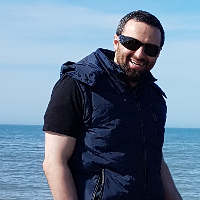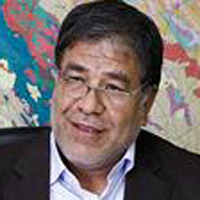Digital modeling of soil sand constituent using hyperspectral data
Sand fraction is one of the most important soil textural segments which should be highlighted for environmental modeling operations and digital soil mapping projects. Identification, mapping and monitoring of sand content over wide scales using traditional procedures is time-consuming and costly. Also spaceborne and airborne spectroscopy(remote sensing) have some defects compared to the laboratory and field spectroscopy. Hence, to overpower the imperfection of RS technology in relation to investigating the factors with spatial changeability, an apt technology is required. With the advent of Lab Diffuse reflectance Spectroscopy(LDRS) which exploits the fundamental vibration, overtones and combination of functional groups, that became a promising tool related. The present research intends to hyperspectral modeling of sand fraction utilizing the proximal soil sensing tech in some parts of Mazandaran province.
In accord with supplementary data layers(geology,pedology,landuse,etc.) and stratified randomized sampling method, eventually, 128 samples from 20cm of soil surface of Mazandaran province (scattered parts), were gathered. First of all, sample-set subdivided into two subsets: calibration and validation. Afterwards, using the hyperspectral analyses, multivariate regression analysis-PLSR method with the leave-one-out-cross-validation technique and some preprocessing algorithms such as: spectral averaging,smoothing and 1stderivative(Savitzky-Golay-derivation algorithm), the definitive calibration model with two&four latent vectors according to indices such as R,R2,RMSE,RPD and RPIQ were made. Results&
During the present research based on the sand hyperspectral modeling in the calibration subset containing 96 samples as well as the validation subset composing of 32 standalone samples, it has been showed the first two and four LVs out of the seven LVs can provide the best estimate of the soils of the study province. Consequently, the calibration process of sand hyperspectral model was done based on the first four LVs and the full LOOCV procedure. Because these number of LVs are able to concentrate the info-variance of sand variable more than 60% and likewise, the info-variance of spectral variables more than of 98%. The best calibrated hyperspectral model predicting sand components resulted with these specs: Rc=0.76,R2C=0.57,RMSEc= 9.77 and SEc of about 9.82. The correlation coefficients(R) of sand contents with the effective spectral domains were calculated as: UV-390nm=0.46, Vis-510to540nm about 0.53, 680to690 about 0.55, NIR- 950to970 about 0.67 and 1100nm=0.70, SWIR-1410 nm=0.76, 1860to1900 about 0.76, 2180to2220 about 0.77; which the specified spectral bands(spectral ranges) with the maximum of R contents indicating their highly impact and influence as the independent predictors on the sand parameter hyperspectral modeling processes at the studied soils of Mazandaran province. Furthermore, the most influential spectral domains involved in the modeling process of sand particles were determined as follows: UV-390nm,Vis-440-540nm,NIR-740-990nm,SWIR-1430-1890,1930,2190-2240,2330-2440nm, which these results were in agreement with others. The quality of calibrated sand hyperspectral model via assays such as Hotelling, adjusted leverage and residual variances was also confirmed. The accuracy assessment specs were as: Rp=0.83,R2p=0.68,RMSEp=8.68,SEp=8.72 and bias=-1.26.
Results indicate the apt hyperspectral analyses to estimate the sand based on LV=2: RPDc=1.51,RPIQc=2.44,RPDp=1.78 and RPIQp=2.45, additionally for LV=4:RPDc=1.54,RPIQc=2.48,RPDp=1.75 and RPIQp=2.41 have been gained. On the basis of the RPIQ values which were more than 2, it can be concluded the models are able to estimate the sand contents of Mazandaran soils satisfactorily and showing the acceptable quality of the predicting models utilizing the hyperspectral data. Our results can be the starting point to accurate mapping of sand constituents of soil texture using the RS platforms. It is noteworthy, the characterization of key wavelengths in the hyperspectral modeling of sand components, the upscaling operation as well as constructing the new airborne/satellite hyperspectral sensors can be bettered using the principle wavebands affecting the hyperspectral process so that providing the more precise hyperspectral studying of soil texture constituents using the aerial or space platforms.
- حق عضویت دریافتی صرف حمایت از نشریات عضو و نگهداری، تکمیل و توسعه مگیران میشود.
- پرداخت حق اشتراک و دانلود مقالات اجازه بازنشر آن در سایر رسانههای چاپی و دیجیتال را به کاربر نمیدهد.




